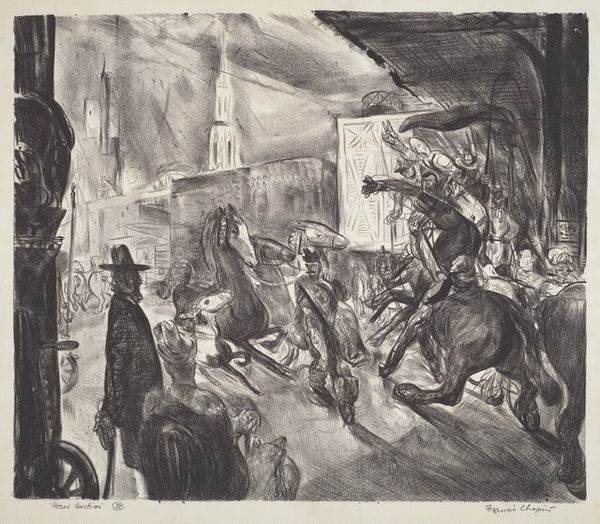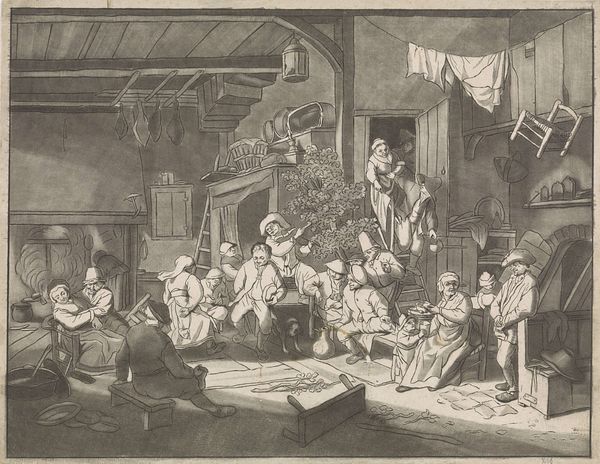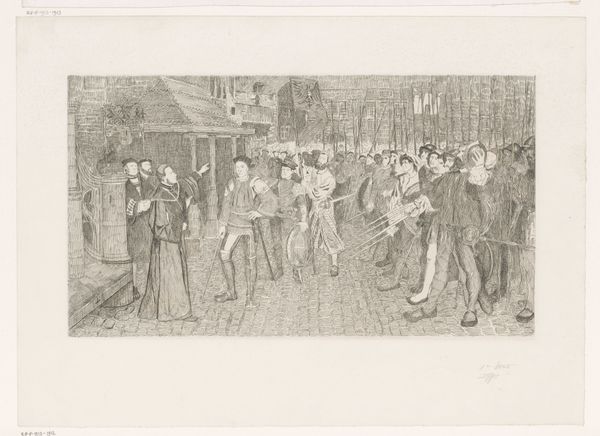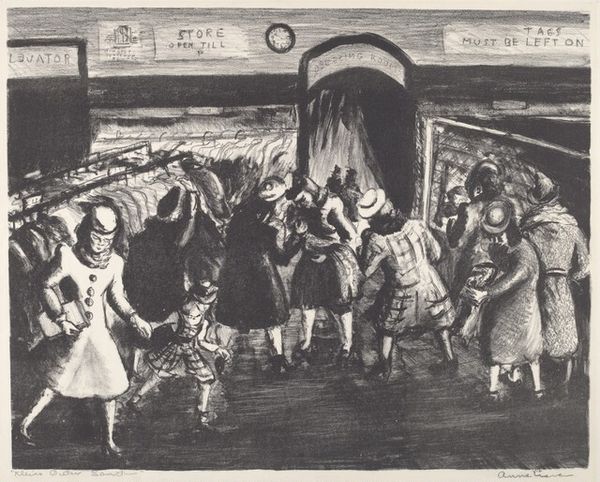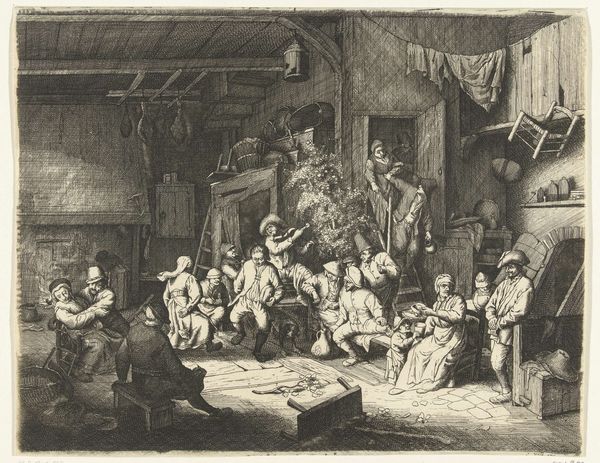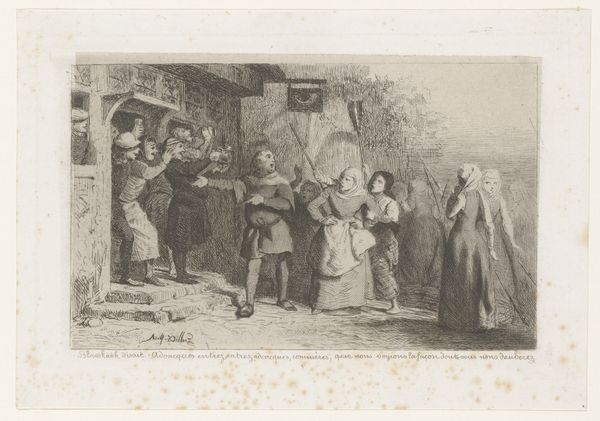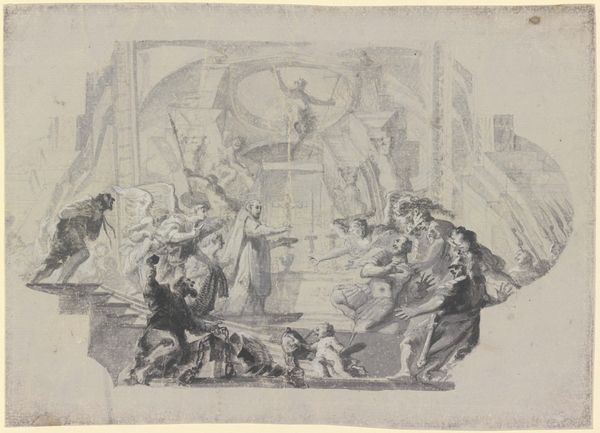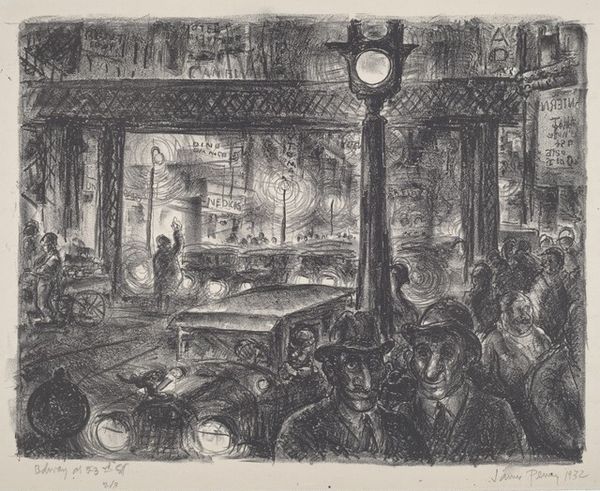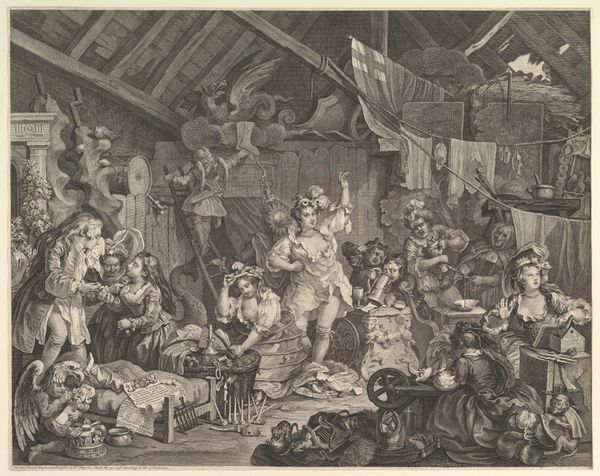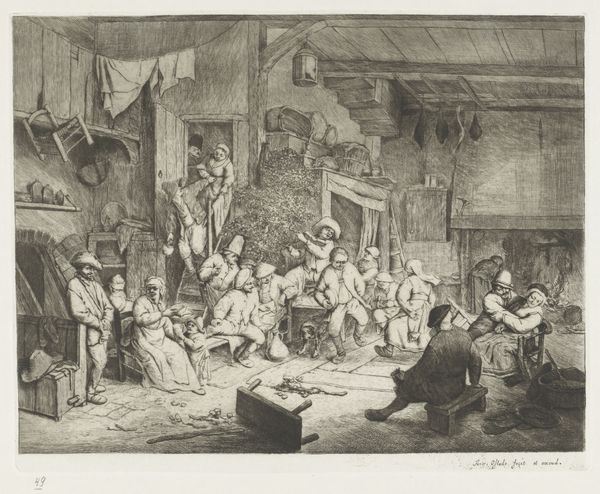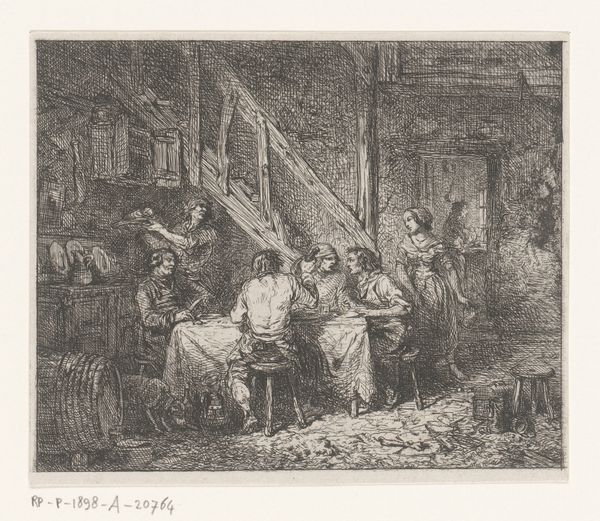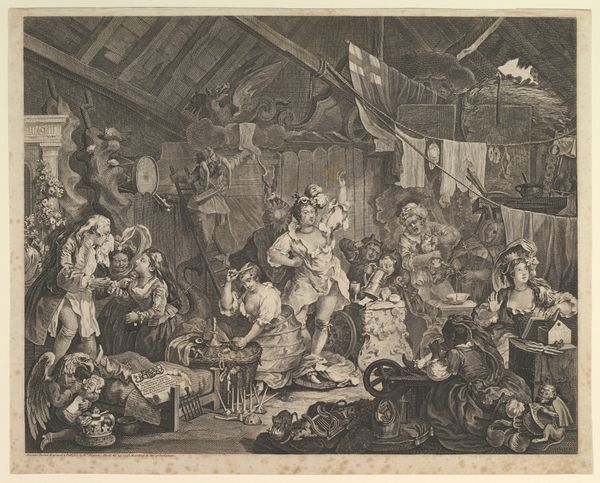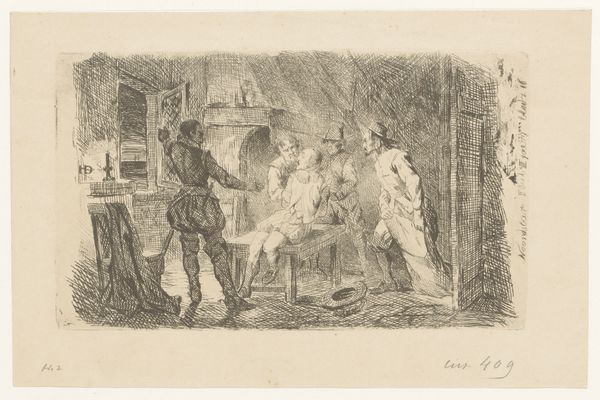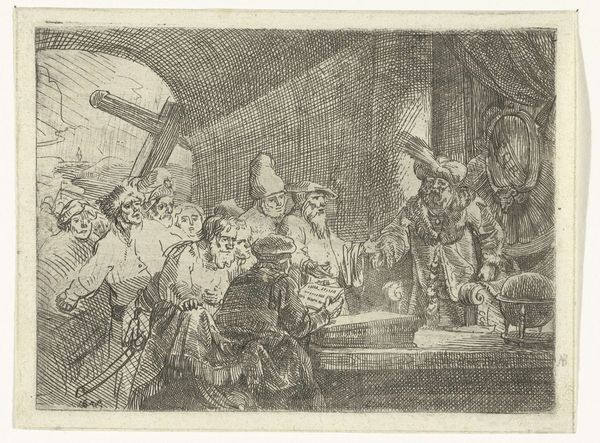
drawing, print, etching
#
drawing
#
ink drawing
#
narrative-art
# print
#
pen sketch
#
etching
#
pencil sketch
#
social-realism
#
line
#
cityscape
#
genre-painting
#
realism
Dimensions: Image: 227 x 278 mm Sheet: 290 x 348 mm
Copyright: National Gallery of Art: CC0 1.0
Curator: Stevedores, etched in 1936 by Beatrice Lavis Cuming, captures a scene of intense labor. What do you make of it? Editor: The sheer density of the composition strikes me first – a convergence of lines creates an oppressive feeling. The gas lamps struggle against the dark, as if light itself is laboring. Curator: Indeed. The print style reinforces this sense. Etching, with its emphasis on line, lends itself to depicting both physical effort and the spatial context where bodies perform under strain. Consider how social realism embraced these techniques for their narrative capacity. Editor: You're right, there is a definite feeling of strain in their posture and the deep shadows. It makes me think about what these repetitive tasks represent – the continuous and heavy labor linked to underworld and passage from the sea into the city. The loading figures emerge like cthonic symbols… Curator: Yes, and note that Cuming depicts men – predominately men. We might situate this artwork alongside feminist readings of labour history, which critically examined both gendered divisions and their effects. There's a complex power dynamic present, revealing visibility but erasing individualism. Editor: And that uniformity is echoed by the beams of light and architecture pressing them onward. Speaking of, notice how the light and shadow emphasize the repetitive forms? The carts themselves appear again and again, like the stages of awareness, carrying a kind of shared knowledge, almost ancestral. Curator: Perhaps they suggest social structures beyond this workplace? Consider class divides during this period: stevedores existed at the bottom tiers, marginalized further based upon gendered and racialized identities. The print unflinchingly shows these intersections, while maintaining a somber distance. Editor: Even the medium reinforces the weightiness you are discussing. Etching and drypoint add density, with strokes merging together. This becomes metaphoric through the repetitive patterns: both action and thought blend within. I get the sensation of work shaping, physically and metaphorically. Curator: Exactly. And viewed today, 'Stevedores' allows viewers a space both to acknowledge their own positions regarding labor—be they direct participation, detachment, or benefiting. A piece laden, even now, with powerful provocations concerning socioeconomic strata and industrial impact on society. Editor: Definitely a memorable visual encounter, this layering of symbolism, and these individuals’ hard-worn experiences makes for profound insights into not just work but shared awareness within societal frameworks.
Comments
No comments
Be the first to comment and join the conversation on the ultimate creative platform.
